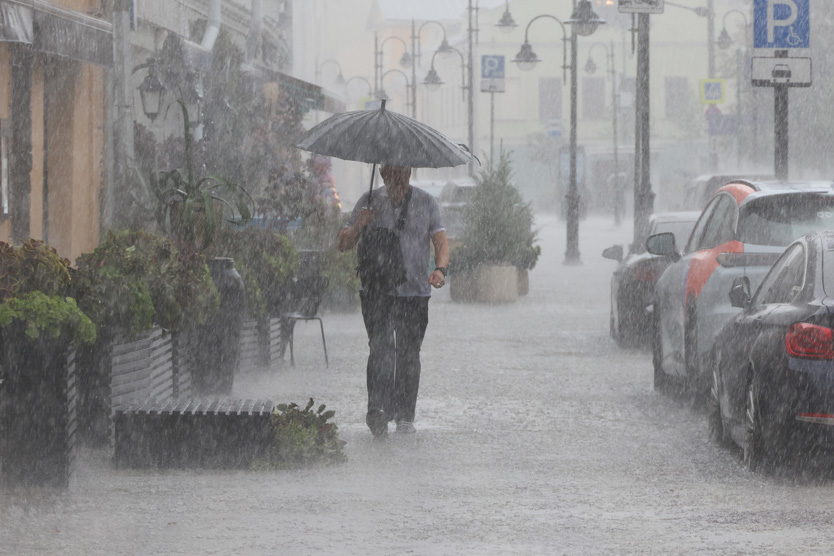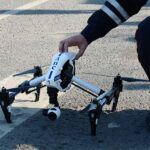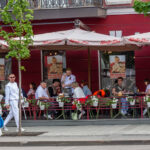The Weather Center “Phobos” reported the heaviest rainfall in Naro-Fominsk—84 mm, or 130% of the entire expected precipitation volume for August. In the capital, 34 mm of precipitation was recorded at the VDNKh weather station over the past day, 30 mm at Balchug, and 35 mm in the Butovo district, which is 45% of the monthly norm. The daily record was set in 1989 when 37.8 mm fell.
- Meanwhile, in the nearby Moscow region (Krasnogorsk and Dolgoprudny), 41 mm of precipitation was recorded.
- As previously noted, Moscow and the surrounding areas were hit by a “rain pig”—a phenomenon named for the distinctive shape of the clouds. Meteorologists had warned of localized flooding on roads and in low-lying areas, which indeed occurred.
Naro-Fominsk
Naro-Fominsk is a town in Moscow Oblast, Russia, located about 70 kilometers southwest of Moscow. Founded in the 14th century, it became notable for its role in World War II as a key defensive point during the Battle of Moscow in 1941–1942. Today, it is an industrial and cultural center with memorials honoring its wartime history.
VDNKh
VDNKh (Vystavka Dostizheniy Narodnogo Khozyaystva), now known as the Exhibition of Achievements of National Economy, is a large trade and expo center in Moscow, Russia. Originally opened in 1939 to showcase Soviet economic achievements, it became a symbol of USSR innovation and industry. Today, it features numerous pavilions, museums, and parks, blending historic Soviet architecture with modern exhibitions and cultural events.
Balchug
Balchug, also known as Bolotny Island, is a historic district in central Moscow, situated between the Moskva River and its Vodootvodny Canal. Originally a marshy area, it was developed in the 18th century and became a commercial hub, home to merchants and warehouses. Today, it is a mix of modern business centers, luxury apartments, and remnants of its industrial past, located near iconic landmarks like the Red House and the Tretyakov Gallery.
Butovo
Butovo is a historical area in southern Moscow, Russia, known for its tragic past as a site of mass executions during the Stalinist Great Purge in the 1930s. Over 20,000 people, including political prisoners, clergy, and intellectuals, were killed and buried there. Today, it serves as a memorial complex and a Russian Orthodox Church shrine, honoring the victims of Soviet repression.
Krasnogorsk
Krasnogorsk is a city in Moscow Oblast, Russia, located just northwest of Moscow. Founded in 1932, it became notable as the site of the Krasnogorsk Mechanical Works, a major Soviet optics and defense manufacturer, and later as the home of the Russian State Archive of Film and Photo Documents. Today, it is a growing suburban area with industrial, historical, and cultural significance.
Dolgoprudny
Dolgoprudny is a city in the Moscow Oblast of Russia, located about 20 kilometers north of Moscow. Founded in 1931 as a settlement for the Dirigible Construction Experimental Plant, it later became a center for science and education, home to the Moscow Institute of Physics and Technology (MIPT). The city’s name, meaning “Long Ponds,” comes from the nearby Dolgiye Prudy reservoir.
Moscow
Moscow, the capital of Russia, is a historic city founded in 1147, known for its iconic landmarks such as the Kremlin, Red Square, and St. Basil’s Cathedral. As the political, economic, and cultural heart of Russia, it has played a central role in the country’s history, from the Tsarist era through the Soviet period to modern times. Today, Moscow is a vibrant metropolis blending rich traditions with contemporary architecture and global influence.
Moscow region
The Moscow region, surrounding Russia’s capital, is a historically rich area known for its picturesque landscapes, historic towns, and cultural landmarks. It played a key role in Russian history, serving as a defensive stronghold and later as an industrial and cultural hub. Notable sites include ancient monasteries like Sergiyev Posad, grand estates like Arkhangelskoye, and WWII memorials, reflecting its deep heritage.






